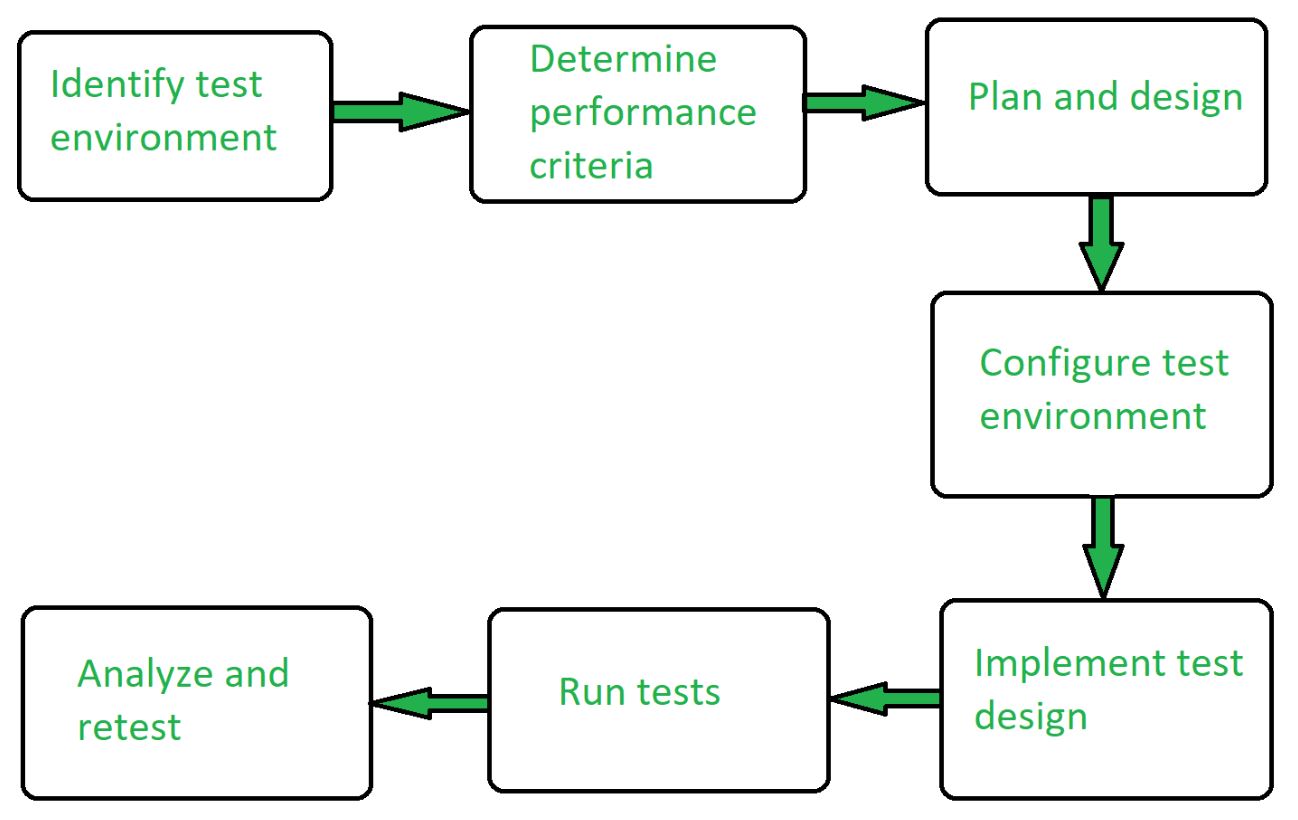
|
|
Performance Testing is a type of software testing that ensures software applications perform properly under their expected workload. It is a testing technique carried out to determine system performance in terms of sensitivity, reactivity, and stability under a particular workload. Prerequisite – Types of Software Testing Table of Content
What is performance testing?Performance testing is a type of software testing that focuses on evaluating the performance and scalability of a system or application. Performance testing aims to identify bottlenecks, measure system performance under various loads and conditions, and ensure that the system can handle the expected number of users or transactions. Types of performance testingPerformance Testing is the process of analyzing the quality and capability of a product. It is a testing method to determine the system’s performance in terms of speed, reliability, and stability under varying workloads. Performance testing is also known as Perf Testing. The types of Performance testing are as follows:  Performance Testing Types 1. Load testingLoad testing simulates a real-world load on the system to see how it performs under stress. It helps identify bottlenecks and determine the maximum number of users or transactions the system can handle. It checks the product’s ability to perform under anticipated user loads. The objective is to identify performance congestion before the software product is launched in the market. 2. Stress testingStress testing is a type of load testing that tests the system’s ability to handle a high load above normal usage levels. It helps identify the breaking point of the system and any potential issues that may occur under heavy load conditions. It involves testing a product under extreme workloads to see whether it handles high traffic or not. The objective is to identify the breaking point of a software product. 3. Spike testing
Spike testing is a type of load testing that tests the system’s ability to handle sudden spikes in traffic. It helps identify any issues that may occur when the system is suddenly hit with a high number of requests. It tests the product’s reaction to sudden large spikes in the load generated by users. 4. Soak testingSoak testing is a type of load testing that tests the system’s ability to handle a sustained load over a prolonged period. It helps identify any issues that may occur after prolonged usage of the system. 5. Endurance testingEndurance testing is similar to soak testing, but it focuses on the long-term behavior of the system under a constant load. It is performed to ensure the software can handle the expected load over a long period. 6. Volume testingIn Volume testing, a large number of data is saved in a database and the overall software system’s behavior is observed. The objective is to check the product’s performance under varying database volumes. 7. Scalability testingIn Scalability testing, the software application’s effectiveness is determined by scaling up to support an increase in user load. It helps in planning capacity additions to your software system. >Why use performance testing?
How to conduct performance testing?Conducting performance testing involves several steps to ensure that a software application can handle expected loads and perform well under stress. Here’s a simplified guide on how to conduct performance testing:  performance testing process Step 1: Set Up the Testing Environment First prepare the place where you will run the tests for the performance testing. Make sure you have all the needed tools and understanding for the setup, like what devices and software you will be using for the performance testing. Step 2: Decide What to Measure Think about what you want to know from the tests. This will include things like how fast the system responds to and how much it can handle the tests. You can also look at successful similar systems to set your goals. Step 3: Plan Your Tests to Figure out different scenarios to test, considering things like how users might behave and what data you will use. This helps you create tests that cover a range of situations and decide what data to collect. Step 4: Set Up Your Tools Get everything ready for testing, including tools and ways to track what’s happening during the tests. Step 5: Create and Run Tests Make the tests based on your plan and run them. Keep track of all the data you get from the tests. Step 6: Look at the Results After each test, see what you find out. Adjust your tests based on what you learn, and run them again to see if things change. Step 7: Keep Testing Keep analyzing and adjusting your tests to get the best results. Repeat the process until you are satisfied with the performance. Advantages of Performance Testing
Disadvantages of Performance TestingPerformance testing also has some disadvantages, which include:
What is Cloud-based Performance Testing?Cloud-based Performance Testing simulates real-world user traffic and uses cloud computing platforms to evaluate the scalability and performance of online applications. Utilizing the scalability and flexibility of cloud infrastructure provides advantages over conventional methods and helps organizations locate performance bottlenecks and effectively optimize application performance. Cloud-based Performance Testing allows for the quick iteration and ongoing improvement of software systems, enabling the delivery of dependable and high-performing applications in today’s digital ecosystem. It does this by distributing virtual users across multiple locations and providing real-time information. Performance Testing Tools
Performance Testing Attributes
ConclusionPerformance testing evaluates the system performance under different conditions, by checking the speed, scalability, stability, and reliability with testing. Its complexities and resource requirements will give benefits like identifying bottlenecks, improving scalability, reducing risk, and improving the user experience. Cloud-based tools like Apache JMeter and Load Runner will improve the way of testing. Frequently Asked Questions on Performance TestingWhat is performance and its types?
How to start performance testing?
|
Reffered: https://www.geeksforgeeks.org
| Automation Testing |
| Related |
|---|
| |
| |
Type: | Geek |
Category: | Coding |
Sub Category: | Tutorial |
Uploaded by: | Admin |
Views: | 17 |